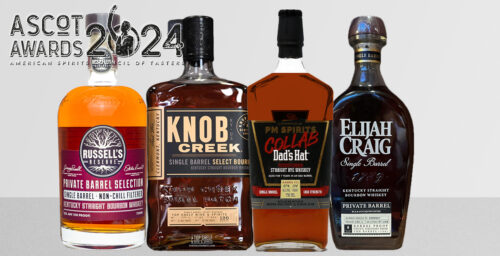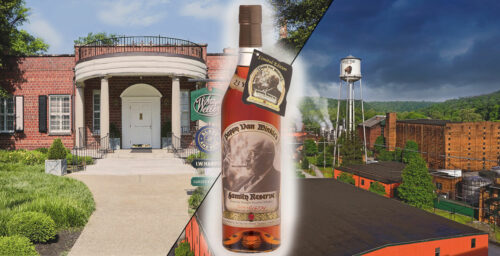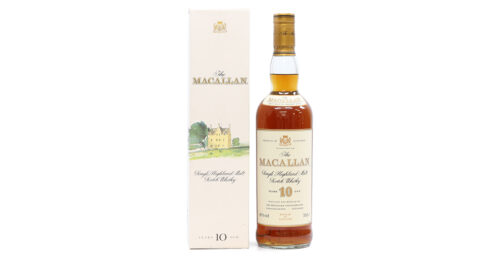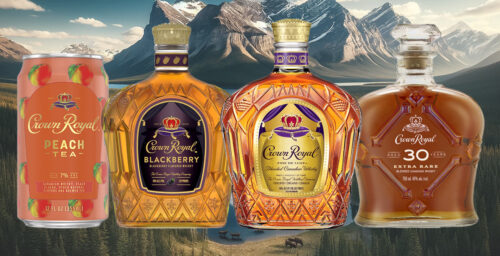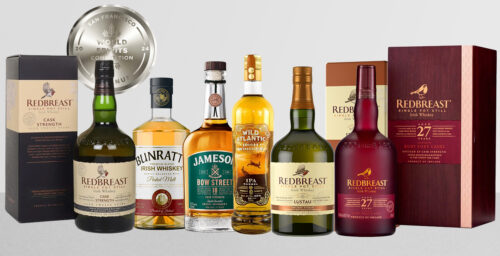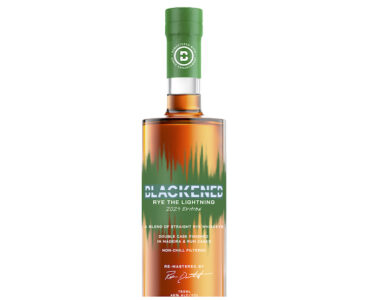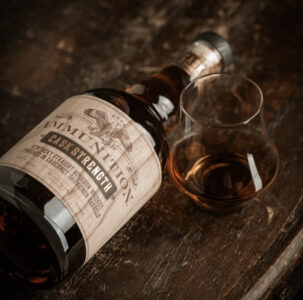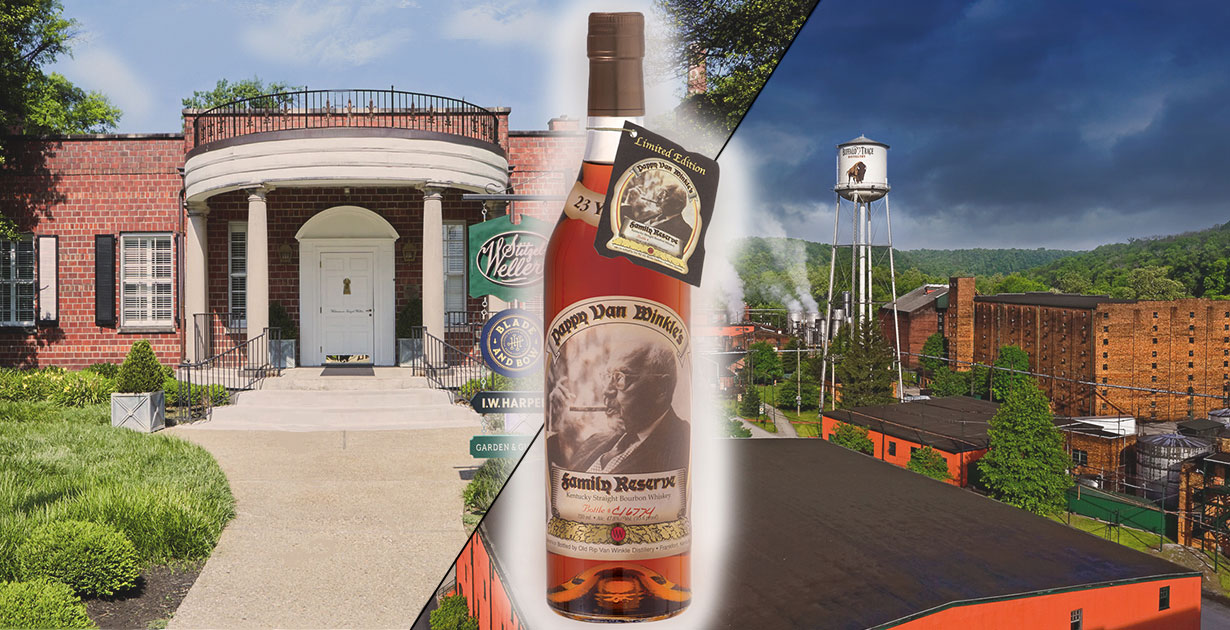
Pappy Van Winkle is undoubtedly one of the most sought-after collectible bourbons in the world, renowned for both its quality and scarcity. Despite this, not all Van Winkle bottlings share the same origin or heritage – the Pappy Van Winkle brand’s history is divided into two.
Originally, there are the oldest bottlings, released with varying age statements and designs, with whiskey primarily sourced from the Stitzel-Weller Distillery. Then, there is the whiskey produced after Julian Van Winkle III began distilling and bottling at the Buffalo Trace Distillery in 2002.
Exploring the brand’s journey from Stitzel-Weller to Buffalo Trace – this is the chronology of Pappy Van Winkle.
Pappy & The Stitzel-Weller Distillery Era
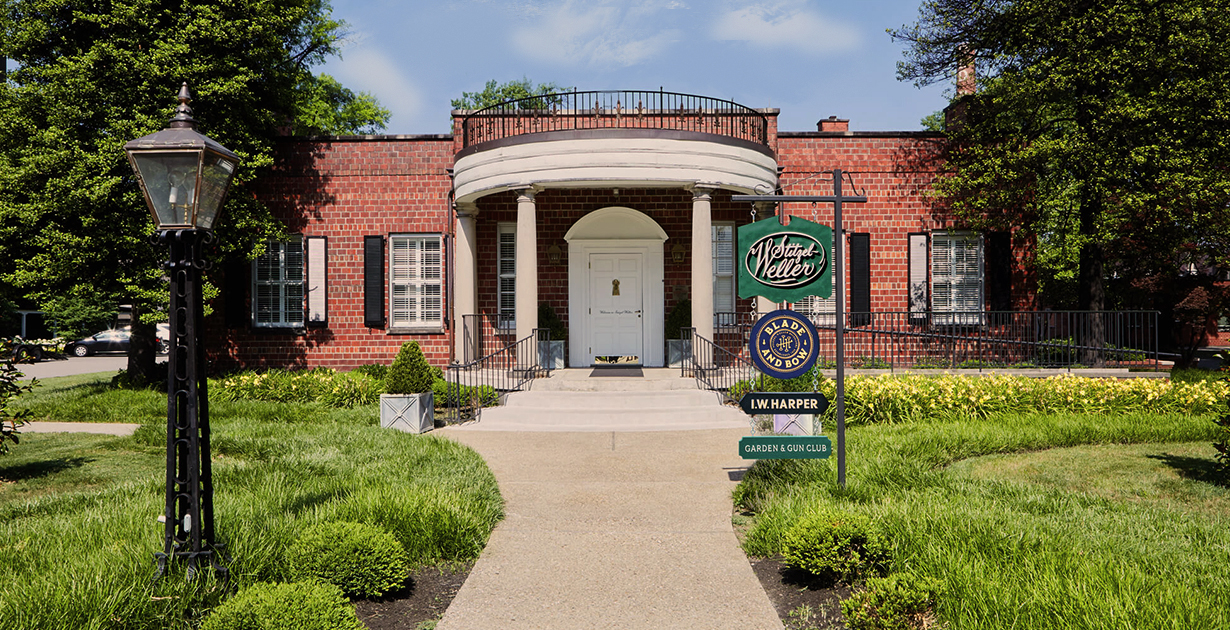
The origins of the Stitzel-Weller Distillery predate the Van Winkle family’s involvement, beginning in the late 19th century. William Larue Weller contracted with the A. Ph. Stitzel Distillery of Louisville, Kentucky to produce whiskey for his liquor wholesale company, W.L. Weller & Sons. In 1893, Weller hired Julian Prentice ‘Pappy’ Van Winkle Sr, as a traveling salesman for W.L. Weller & Sons.
After Weller retired in 1896, Van Winkle and fellow salesman, Alex T. Farnsley, partnered to purchase a controlling interest in W.L. Weller & Sons in 1903. In 1910, Van Winkle and Farnsley also acquired the controlling share in the A. Ph. Stitzel Distillery, the main supplier of whiskey for Weller’s brands – introducing the ‘Old Rip Van Winkle’ brand in 1919.
Throughout Prohibition (1920 – 1933), the A. Ph. Stitzel Distillery was one of only six distilleries in the United States permitted to continue operating, due to a license to produce medicinal whiskey – using W.L. Weller & Sons distribution network to sell whiskey to pharmacies for ‘medicinal prescription’. When Prohibition ended in 1933, Van Winkle and Farnsley partnered with Arthur Stitzel to merge the companies – founding Stitzel-Weller.
On Kentucky Derby Day, May 1935, the new Stitzel-Weller Distillery opened in Shively, Kentucky. Pappy Van Winkle, aged 61, was appointed company president, famously declaring “We make fine bourbon. At a profit if we can, at a loss if we must, but always fine bourbon”.
The Stitzel-Weller Distillery was unique as it only produced wheated bourbon whiskey, using the Stitzel family’s traditional mash recipe. Legally, all bourbon must be made from at least 51% corn, and also typically uses between 5-10% malted barley. Often, the rest of the mash bill uses rye, but the Stitzel-Weller Distillery instead used wheat which is a softer flavoring grain, producing a sweeter, smoother, more accessible bourbon.
Declining Fortunes: The Sale of Stitzel-Weller
Following the deaths of Alex T. Farnsley in 1941, and Arthur Stitzel in 1948, the Stitzel-Weller Distillery remained entirely controlled by the Van Winkle family. Under Van Winkle’s management, Stitzel-Weller’s wheated style of bourbon became widely commercially available, with the sale of brands including, Old Fitzgerald, Old Weller, and Rebel Yell. From 1964, Pappy’s son, Julian Van Winkle Jr., took over operations at Stitzel-Weller, until Van Winkle Sr. passed away aged 91, in 1965.
In 1972, family shareholders forced Van Winkle Jr. into the reluctant sale of the distillery and its brands to conglomerate, Norton-Simon. As part of the Stitzel-Weller sale agreement, Van Winkle Jr. retained a portion of aging whiskey stock and first refusal to purchase any surplus barrels in the warehouse.
Following the sale, Van Winkle Jr. resurrected the pre-Prohibition brand ‘Old Rip Van Winkle’ in 1972, contracting Norton-Simon to produce and bottle whiskey for the brand. Old Rip Van Winkle was initially released as a 7 Year Old bourbon bottled at 90 proof and 107 proof – the age statement increased to 10-Years-Old in 1977.
An Independent Bottler: Julian Van Winkle III
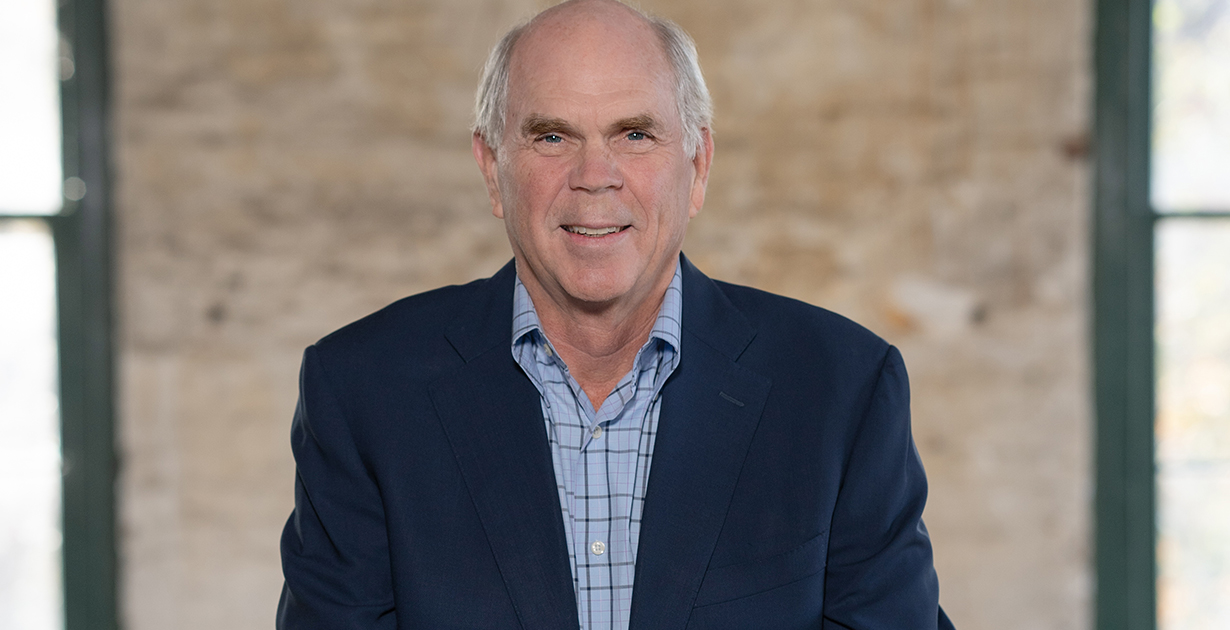
In 1977, Van Winkle Jr.’s son, Julian Van Winkle III joined the business. After Julian Van Winkle Jr. passed away in 1981, Norton-Simon informed Van Winkle III that while they would continue to produce bourbon on contract, they would no longer bottle the family’s brand. Van Winkle III moved barrel storage and bottling to the Old Hoffman Distillery in Lawrenceburg, Kentucky, purchasing the site for $80,000 in 1983.
In partnership with Gordon Hue, owner of Kentucky-based liquor chain Cork ‘N Bottle, Van Winkle III released a series of bourbons from 1984 onwards, initially bottled in cognac style bottles, which became known as the ‘Van Winkle Family Reserve’ range. Van Winkle III drew upon a combination of his father’s aged Stitzel-Weller stocks, new whiskey produced on contract with Norton-Simon, and some remnant stock from the derelict Boone Distillery, to bottle the ‘Family Reserve’ series.
By the early 1990s, Van Winkle III had acquired enough aging barrels from Stitzel-Weller to release 12 and 15 Year Old Old Rip Van Winkle bottlings and a variety of ‘Family Reserve’ age statements. Despite a bourbon market downturn, Van Winkle III used stock from the Old Boone Distillery to release the first premium 20 Year Old bourbon ever bottled, featuring a photo of his grandfather, Julian Prentice ‘Pappy’ Van Winkle Sr. on the label, in 1994 – the first Pappy Van Winkle’s Family Reserve expression.
The Buffalo Trace Era
In 1992, the Stitzel-Weller Distillery owner, Diageo, ceased whiskey production. While Van Winkle III continued to release premium aged Pappy Van Winkle’s Family Reserve bourbons, including a 23-Year-Old expression in 1998 (although the actual origin of the whiskey used to create the 23 Year Old is disputed), the family’s stocks of wheated Stitzel-Weller whiskey for younger age statement brands were quickly depleted. Searching for a producer with experience of distilling using a wheated mash recipe, the Van Winkles initially transitioned production to the Bernheim Distillery in Louisville, Kentucky owned by Heaven Hill.
At the Kentucky Bourbon Festival in September 2001, Van Winkle III was approached by Mark Brown, President of the Buffalo Trace Distillery in Frankfurt, Kentucky, about forming a partnership between the Distillery and Van Winkle brand. Crucially, the Buffalo Trace Distillery was already producing a similar recipe for wheated whiskey, having acquired Stitzel-Weller’s W. L. Weller brand. From May 2002, the venture was official, with Buffalo Trace assuming all Van Winkle brand production from grain to bottling.
Throughout the 2000s the remaining stocks of Stitzel-Weller whiskey were used to bottle Pappy Van Winkle’s Family Reserve bourbon expressions – until expressions were substituted with wheated whiskey distilled at Buffalo Trace. Since production moved fully to Buffalo Trace, three expressions of Pappy Van Winkle’s Family Reserve are consistently released, aged at 15, 20, and 23 Years Old.
Pappy Van Winkle Production at Buffalo Trace
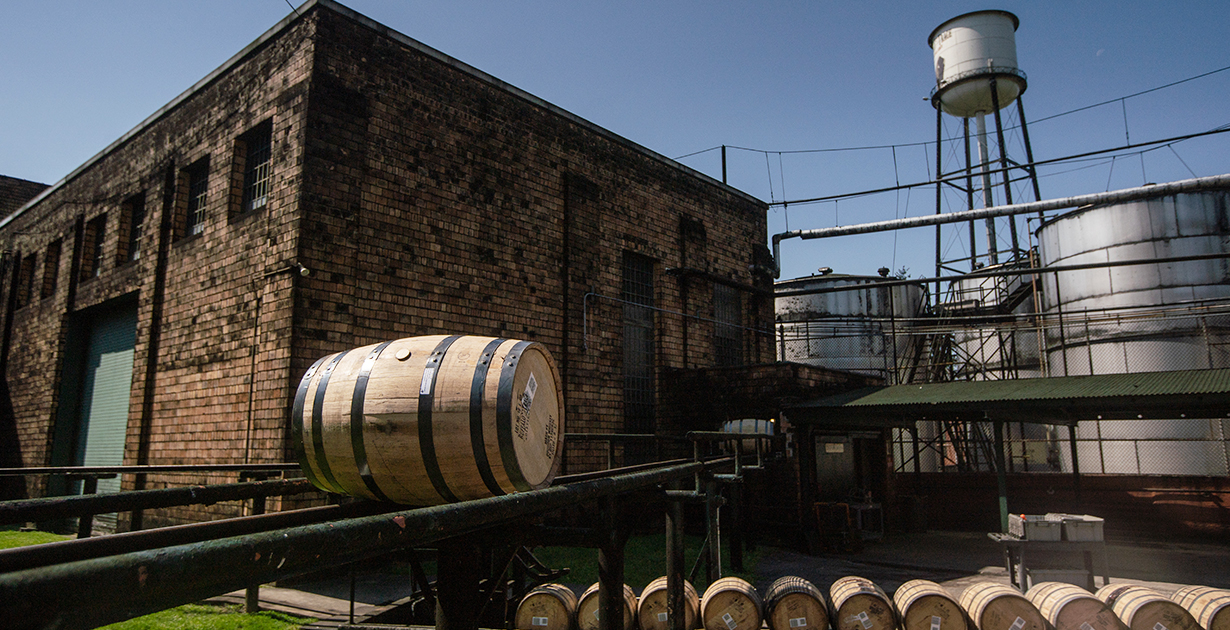
At Buffalo Trace, all Pappy Van Winkle is produced using the traditional wheated mash recipe, made with the Red Winter wheat variety, shared with the W.L. Weller brand. Despite the same mash recipe, there are several significant differences separating the Van Winkle expressions from the W.L. Weller brand. All Van Winkle bourbon is aged on the lower floors of Buffalo Trace’s rack house, ensuring a consistently cooler temperature. The interaction between aging whiskey and barrel wood is slower, allowing a longer maturation.
Unlike the W.L. Weller brand which vats together hundreds of barrels, the Pappy Van Winkle batch size is tiny – combining only 5-6 bottles. Each barrel is selected by Van Winkle III, his son, Preston Van Winkle, and a small team of Buffalo Trace employees, to ensure consistent control and quality of the premium Pappy Van Winkle brand.

